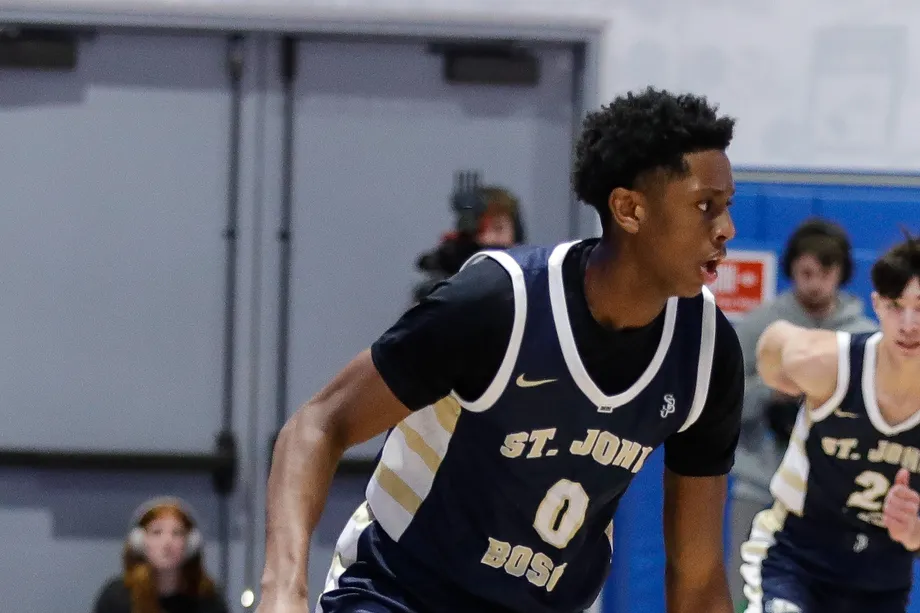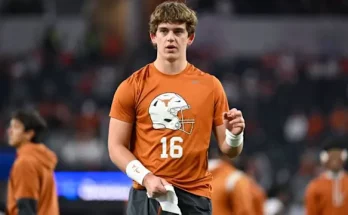The landscape of college basketball recruiting is always a dynamic arena, with programs constantly vying for the nation’s top talent to build championship-caliber teams. Duke University, a perennial powerhouse under Coach Jon Scheyer, has maintained its elite status by securing some of the most promising recruits each year. Two names generating significant buzz recently are Dame Sarrs and Brandon McCoy. These two players embody the exciting future that Duke basketball fans can anticipate, but their journeys to Durham have distinct narratives and implications for the Blue Devils’ roster moving forward.
Dame Sarrs, a highly touted prospect, has captured the attention of college scouts and analysts alike with his unique combination of size, athleticism, and versatility. Standing around 6-foot-7 with a slender but growing frame, Sarrs is a forward whose game has been characterized by a smooth shooting stroke and impressive agility for his stature. His ability to stretch the floor with outside shooting while also having the strength and footwork to attack the rim makes him a coveted asset in today’s modern college basketball schemes. Sarrs’ skill set fits perfectly with the way Duke likes to play—up-tempo, spacing the floor, and creating mismatches through versatility.
What makes Dame Sarrs’ recruitment particularly interesting is the level of competition he has faced for his commitment. Several blue-blood programs, including Kentucky, North Carolina, and Kansas, have been heavily courting him. Each of these schools presents a compelling case for top recruits, often through their storied histories and recent successes. Yet, Duke’s pitch seems to be resonating strongly with Sarrs, highlighting not only the program’s winning tradition but also the coaching staff’s commitment to player development and preparing athletes for the professional level.
Sarrs has reportedly been impressed by the culture Coach Scheyer has cultivated, especially in the wake of the recent national championship. The ability to join a team that values both personal growth and collective success is a powerful draw. Moreover, Sarrs’ relationship with current Duke players and alumni has played a pivotal role in building his enthusiasm. Hearing firsthand about the daily grind, the camaraderie, and the opportunity to make a lasting legacy on Cameron Indoor Stadium’s legendary hardwood has only solidified his interest.
From a basketball perspective, Sarrs projects as a potential cornerstone for Duke’s frontcourt for years to come. While he’s still honing certain aspects of his game, such as defensive positioning and consistency in rebounding, his ceiling is undeniably high. Coaches envision him as a player who can guard multiple positions and be a major factor in transition and half-court sets. The ability to play both power forward and small forward gives Duke added flexibility in lineup construction, which is crucial when juggling the talents and egos of a deep roster.
Turning to Brandon McCoy, his story is one of perseverance and a quest for resurgence. McCoy, a 7-foot center with a physical presence, initially burst onto the scene as one of the top big men in his class during his high school days. Known for his rebounding prowess, shot-blocking ability, and interior scoring, McCoy was a prize recruit who committed to a top-tier program early in his career. However, after navigating the complexities of college basketball, including transfers and injury challenges, his path has been somewhat turbulent.
Now, McCoy is in a position to revive his trajectory, and Duke has emerged as a potential landing spot that could catalyze a significant comeback. For McCoy, this is about more than just finding a new team—it’s about rediscovering his confidence, redefining his role, and proving that he can still be a dominant force in the paint at the collegiate level. Duke’s interest in McCoy underscores the program’s willingness to take calculated risks on players with immense talent who may have faced setbacks but retain the tools and work ethic to contribute meaningfully.
McCoy’s fit within Duke’s system would be intriguing. While Duke traditionally favors a versatile, fast-paced style, there is always room for a strong interior presence who can anchor the defense and command attention on the glass. McCoy’s size and strength allow him to protect the rim and battle for rebounds against some of the best frontcourt players in college basketball. Additionally, if McCoy can improve his conditioning and add some mobility, he could be a matchup nightmare for opponents, combining size with surprising agility.
From a developmental standpoint, Duke’s coaching staff is well-equipped to assist McCoy in maximizing his potential. The program’s recent success with big men who have made successful jumps to the NBA shows that the environment is conducive to player growth. Whether it’s refining post moves, enhancing defensive footwork, or improving stamina, the resources available to McCoy at Duke could help him make the leap to the next level.
The recruiting battle for both Sarrs and McCoy also reflects a broader trend in college basketball recruiting—programs are increasingly looking for players who offer both immediate impact and long-term upside. With the transfer portal and NIL deals shifting the dynamics of player movement, coaches must be astute in evaluating not only talent but also character, fit, and potential trajectory. Duke’s approach with these two players exemplifies that careful balance.
For Sarrs, the emphasis is on securing a young player who can be developed into a multi-year contributor, someone who can help sustain Duke’s status as an elite program for the foreseeable future. His recruitment represents a forward-looking vision—building a core that can grow together and compete for championships over multiple seasons. Meanwhile, McCoy’s potential addition is more of a calculated gamble, a chance to harness a high-upside player who could bring immediate physicality and presence while also aiming for a personal renaissance.
The fan base is watching these developments closely. For Duke supporters, the prospect of adding Dame Sarrs is thrilling—he represents the archetype of the modern Blue Devil: skilled, athletic, and versatile. His arrival would undoubtedly excite the crowd at Cameron Indoor Stadium and provide Coach Scheyer with a dynamic weapon on both ends of the court. Meanwhile, the intrigue surrounding McCoy adds a compelling subplot. If he can return to form, he could become a dominant figure in the ACC and a fan favorite for his hustle and determination.
Behind the scenes, the Duke coaching staff is executing a meticulous recruiting strategy. This involves not only relationship-building with players and their families but also aligning the recruits’ academic and personal goals with the university’s mission. Duke’s reputation for academic excellence, combined with its basketball prestige, offers a compelling package for prospects seeking a balanced college experience. Both Sarrs and McCoy have expressed interest in being part of a program where education is valued alongside athletic achievement.
Additionally, Duke’s approach to player empowerment is resonating well with recruits. The program’s support for NIL opportunities and individualized branding is a key factor in attracting top talent who are mindful of their future professional prospects. This forward-thinking stance is part of what differentiates Duke in the increasingly competitive recruiting marketplace. Players see that they can develop their games while also building their personal brands, all within a supportive environment.
Looking at the bigger picture, the recruitment of Dame Sarrs and Brandon McCoy fits into Duke’s ongoing strategy to reload with a balanced mix of fresh talent. After the departure of key players to the NBA and transfers, the Blue Devils need to replenish their roster depth and maintain their edge in the ACC and nationally. Sarrs’ skill set as a forward and McCoy’s interior presence would address critical roster needs, complementing the existing core and adding new dimensions to the team’s style of play.
While it is still early in the recruiting process, the signs are promising. Both players have made multiple visits to campus, meeting with coaches, current players, and academic advisors. Their comfort level with the program appears to be increasing, which bodes well for Duke’s chances. Of course, recruiting is a fluid process with many factors at play, including other offers, personal considerations, and timing. But Duke’s commitment to these players and the fit on both sides seems to be a positive match.
If Sarrs commits, it would reinforce Duke’s reputation for attracting versatile forwards who can impact the game in various ways. His scoring ability, combined with his length and athleticism, could make him a key player as early as his freshman year. For McCoy, joining Duke would offer a vital platform to regain confidence and prove himself. Success stories of players who have transferred and flourished at Duke provide hope that McCoy could follow a similar path.
In sum, the updates on Dame Sarrs and Brandon McCoy encapsulate the promise and challenges of Duke’s recruiting landscape. Sarrs represents the exciting future—young, skilled, and eager to contribute to a championship contender. McCoy embodies the possibility of redemption and resilience—a talented big man seeking a fresh start at a prestigious program. Together, they paint a picture of a program ready to compete at the highest level while fostering growth and opportunity for its players.
As the recruiting cycle progresses, all eyes will remain on these two prospects and the decisions they make. Their choices will undoubtedly impact Duke’s fortunes and the broader college basketball landscape in the coming seasons. For now, the Blue Devils continue to build momentum and lay the groundwork for sustained success, with Dame Sarrs and Brandon McCoy playing key roles in that unfolding story.



